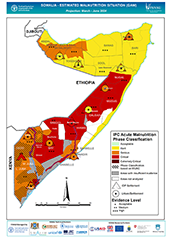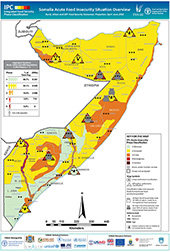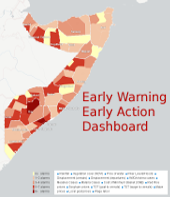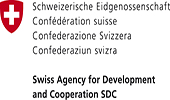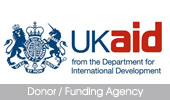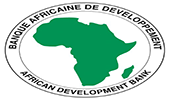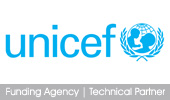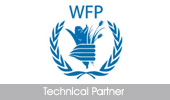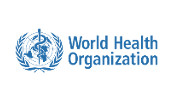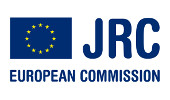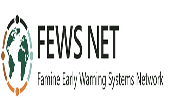Regional Analysis / Rural
Rural
Period Covered: January-March 2010 | Issued: 20 April 2010
In general, the food security situation has shown a slight improvement in most parts of Somalia, particularly in the drought affected and rain deficit livelihood zones, with the exception of central regions. This is a result of normal to good unseasonal rains received during Jilaal 2010, which improved water and rangeland conditions, livestock production and labour opportunities in view of intensified agricultural activities. However, the numbers (3.2 million people) and distribution of population in Humanitarian Emergency (HE) and Acute Food and Livelihood Crisis (AFLC) estimated during Post Deyr 2009/10 assessment remains unchanged. Livelihoods of drought stricken central regions (Mudug, Galgaduud and Hiran) have been negatively affected by the long Jilaal dry season, which came after six consecutive seasons of rain failure with heavy livestock losses, hyperinflation, civil insecurity and market disruptions.
The nutrition situation is very alarming in these areas and sustained significantly above emergency levels (Critical to Very Critical) since Gu 2009. Conversely, the food security situation of pastoral and agropastoral areas in Sanaag and Togdheer identified in HE during Post Deyr 2009/10 has improved, due to improved water and pasture conditions, leading to decreased household expenditures on water and fodder purchases and livestock migration, on one hand, and increased income from livestock sales, on the other. In the South, the impact of moderate to good unseasonal rains on food security was slightly diluted by increased cereal prices in most markets. However, household incomes are positively affected by improved milk production and labour wage rates resultant from abundant agricultural labour opportunities in February-March 2010. In early April, the Gu 2010 rains started in some parts of the North, but at this point it is too early to determine the overall seasonal performance and its impact on food security.
Northern Regions
The late Hays rains (Golis and Coastal/Guban) and moderate to good unseasonal rains, during late February and early March, positively affected most pastoral and agropastoral livelihoods of the North. The rains have replenished water catchments and shallow wells and accelerated pasture and fodder regeneration. As a result of improved water availability, water prices have drastically reduced and even were available free of charge in localized areas where rains were abundant (Togdheer Agropastoral, Sool Plateau of Sanaag and Bari). However, the rains had an adverse impact in Awdal and W. Galbeed regions, causing flash floods during the first dekad of March, which resulted in some livestock deaths, damaged water infrastructure and houses and disrupted trade activities.In contrast, Hawd of Sool and Eyl district (Nugal region), central Nugaal valley, most of Gebi valley of Sanaag and coastal areas of Bari and Nugal region remain dry or received insignificant localized showers.
Water trucking has been continuing in these areas for the last four months, but water prices have reduced due to overall improved water availability in neighbouring livelihood zones and reduced distance to water sources. Water prices have also reduced in Awdal, Togdheer and W.Galbeed (by 20-33%) as well as in the berkad dependent livelihoods of Sanaag and Sool regions (by 5%) compared to December 2009. ToT between local goat and cereal (rice) shows an increasing trend in Northwest (4%), while it has decreased in Northeast (6%) since December 2009, due to the decreased livestock price and increased cereal prices. However, ToTs are still 27% and 45% higher than in March 2009 (see Livestock Sector). In addition, results of the Rapid Food Security and Nutrition Inter-Agency Assessment conducted in northern part of Bari region indicated some alleviation of water crisis following the average to good rains received in these areas. The other main findings of the assessment include, the return of out-migrated livestock into the area, strong social support extended to poor pastoral households during the time of stress, as well as sustained Nutrition phase (Serious). Given the assessment outcomes, the phase classification identified during Post Deyr 2009/10 for northern Bari (Borderline Food Insecure with Moderate Risk of Deterioration to AFLC) remains unchanged.
Central Regions (Mudug, Galgadud and Hiran)
The food security and nutrition situation in central regions has continuously been deteriorating since Gu 2007, due to prolonged drought, high presence of IDPs, market disruptions resulting from civil insecurity, sea piracy activities affecting food imports, hyperinflation and high cereal prices. The above factors resulted in extreme depletion of all livelihood assets in the regions, forcing households to adopt severe distress coping strategies to survive. Livestock herd size, the main income source in all rural livelihoods of Central, has further declined in January-March 2010. This is due to limited births resulting from low to no conception in the preceding season as well as high livestock sales by households to meet their minimum food needs. The long Jilaal dry season has further deteriorated rangeland and water conditions, resulting in reduced livestock conception rates, emaciated livestock body condition and no milk production. These factors have caused continuous movements of many pastoral households towards main villages and towns in search of assistance.
As reported during Post Deyr 2009/10 Assessment, improvements in Cowpea Belt agropastoral and Coastal Deeh pastoral livelihoods resulted in the overall reduced numbers of people in crisis in Central (from 76% in Deyr 2008/09 to 70% in Deyr 2009/10). The urban poor comprise 15% of the people currently in crisis. Even if the Gu 2010 rain performance is good and inflation continues to decline, the population will still remain in crisis for some time. The recovery of the livelihood assets and strategies will take several consecutive normal seasons, because of the prolonged nature and severity of the crisis.
Southern Regions
Food security situation in the South has improved considerably during last Deyr due to overall above average seasonal performance. This improvements continued in the last three months with the mild Jilaal dry season owing to moderate to above normal rainfall received in most parts in late February - early March 2010.The rainfall has positively impacted pasture/browse, water and crop conditions. The reduced water stress and recovered rangeland in key pastoral areas, have contributed to improved livestock body condition, production (milk) and conception levels, and reduced livestock migration. Local quality goat prices have increased in the last three months in most main markets of the Sorghum Belt, including Beletweyne (39%), Luuq (30%) and Xudur (11%), while the prices were comparable in Shabelle regions. However, the prices have slightly reduced in Juba regions (7%) due to high tension in Juba regions and Mogadishu in the reporting period restricting trade movement.
Intensified agricultural activities for off-season crop harvesting in Juba regions and early Gu planting preparation have increased farm labour opportunities and contributed to labour wage increases in most agropastoral and riverine areas. However, the increased labour wages and local goat prices did not contribute much to the improvement of purchasing power of rural households in the South due to increased cereal prices. This increase resulted from low supplies following below normal Deyr cereal production in the regions of Gedo, Hiran, Lower Shabelle, Middle Shabelle and parts of Bakool, discontinuation of food aid distribution to IDPs in Afgoye corridor and increased insecurity (Lower Juba, Middle Shabelle and Mogadishu) affecting trade movements. Therefore, the ToT have reduced in Shabelle, Juba and Gedo regions for local quality goat/cereal as well as labour wage/cereal. Conversely, the ToT has improved in other markets, including Baidoa (Bay), Beletweyne (Hiran) and Xudur (Bakool) (See Agriculture Sector).
